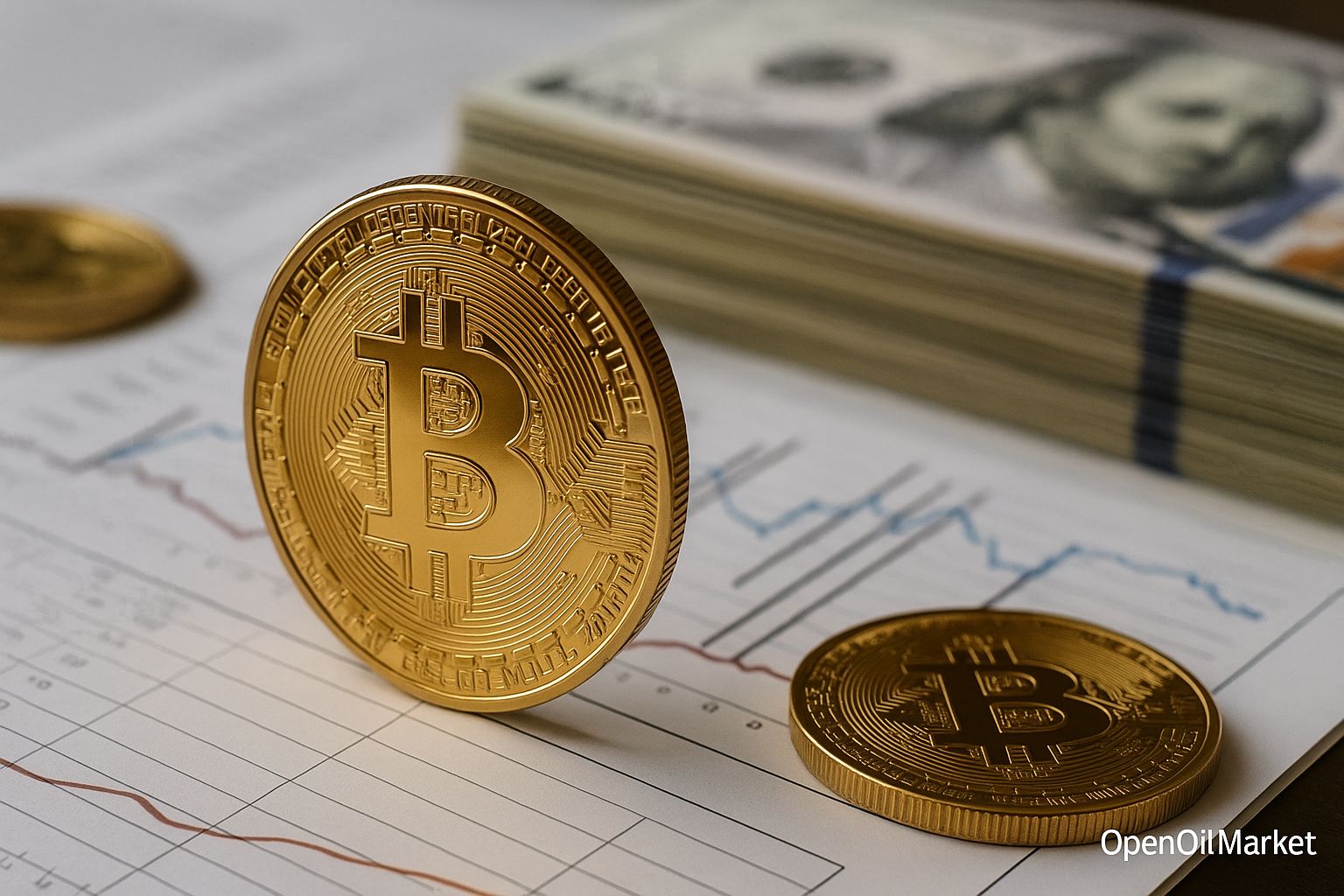Where to Invest One Million Rubles: Mid-term Investments
In the context of a dynamic economy, prudent allocation of funds over a mid-term period (1–3 years) helps preserve and increase capital. This article examines legal investment instruments in the ruble zone and abroad available to Russian investors with holding periods of up to three years. We will compare their yields, risks, liquidity, and taxation features, and provide examples of diversified portfolios totaling 1 million ₽.
Bank Deposits and Accounts
-
Yield. Ruble deposits remain one of the conservative instruments: major banks offer rates around 16–24% per annum (depending on the term). According to the Bank of Russia, the weighted average rates for deposits of 6–12 months reached approximately 23.5% by fall 2024. Long-term deposits over a year often yield slightly less (around 20–22%). Foreign currency deposits in dollars/euros usually offer a single figure (2–4%) but involve currency risk.
-
Risks and Reliability. Risks associated with bank deposits are minimal: the state deposit insurance system compensates for losses of ruble deposits up to 1.4 million ₽. Early withdrawal may result in penalties and the loss of some accrued interest. However, inflation and the dynamics of the key rate set by the Bank of Russia impact real yields—historically, the purchasing power of ruble deposits has declined. For instance, over the last decade, real income for deposit holders has decreased by almost 18%.
-
Taxation. Starting in 2024, interest on deposits is subject to personal income tax (PIT) of 13% above a tax-exempt threshold. This threshold equals 1 million ₽ multiplied by the maximum key rate for the year. With a key rate of approximately 15%, this translates to about 150,000 ₽ in annual deposit income. Therefore, if total income from deposits exceeds 150,000 ₽, the amount above that is taxed at 13%. Income below this threshold is tax-exempt.
Conclusion: Deposits provide very high nominal yields in the current conditions (over 16%), nearly zero risk to the principal (when insured), and full liquidity (after the deposit term). Their downsides include the need for term fixation and relatively high inflation, thus yielding modest real returns over a 2-3 year horizon. They are ideal for the 'core' of a portfolio or as a 'safety cushion.'
Bonds: Government and Corporate
Government Bonds (OFZ)
-
Yield. Federal loan bonds (OFZ) are the most conservative debt instruments. The yield on current OFZ remains high: for example, the OFZ index with a duration of 5–10 years (RGBITR10Y) achieved a historical maximum cumulative yield of around 15% per annum in 2024. A broader index (RGBITR) peaked at approximately 15.3% per annum in spring 2024. Short-term OFZ (under a year) typically yield slightly lower, but similar rates can be found. In this context, OFZ are more attractive than long-term deposits, especially when the Bank of Russia increases rates.
-
Risks and Liquidity. OFZ are considered practically risk-free regarding defaults since they are issued by the government. The risk lies in price fluctuations during trading: if the key rate rises, bond market prices drop (and vice versa). However, if held to maturity, yield is guaranteed by coupons and the return of the nominal value. A combination of long duration and high rates can provide fixed yields from bonds that are better than those from deposits. OFZ come in small denominations (from 1,000 ₽), and can be purchased through a broker.
-
Taxation. Coupon income from bonds is subject to PIT of 13% (15% if total income exceeds 5 million ₽ per year). However, bonds can be purchased via an Individual Investment Account (IIA) to receive a 13% tax deduction (or 15% for business growth investment amounts up to 400,000 ₽), which enhances net yields by the amount of the deduction. Additionally, some OFZ with floating coupons (OFZ-PC) are tied to the RUONIA rate, which reduces market volatility when the key rate rises.
Conclusion: OFZ offer fixed yields of approximately 14–16% for mid-term investments and virtually full reliability. They feature high liquidity (traded on the Moscow Exchange) and clear risks: if held until maturity, none will “default.” OFZ are well-suited as the "anchor" for the conservative part of a portfolio, especially over a 1–3 year horizon.
Corporate Bonds
-
Yield. Corporate bonds can provide significantly higher coupons (up to 20–30% per annum from some issuers). For example, even reliable companies currently offer coupons of 22–25%, and experts expect reductions to 22–23% in 2025 (if the key rate remains stable). There are also riskier issues with coupons ranging from 30–36% for seasoned investors.
-
Risks. The primary risk of corporate bonds is default or deterioration in the issuer's financial standing. Many companies must pay high interest rates on loans due to the rise of the Bank of Russia's base rate. Evaluating the issuer's credit rating, debt load, and business reserves is crucial when selecting bonds. During declines in bond prices (due to rising rates or news about the company), losses may occur if sold prematurely; however, coupons often exceed bank deposit yields. Bonds with long maturity, fixed coupons, and low ratings are notably high-risk (they generally need to be held until maturity, or one should opt for issues with "floating coupons").
-
Liquidity and Taxes. Corporate bonds are traded on the exchange, but liquidity may be low for smaller issues. Coupon taxation is the same—PIT of 13% (15%). Deductions through an IIA are applicable only to OFZ coupons, not to corporate bonds.
Conclusion: High-yield bonds offer significantly greater current yields than deposits and OFZ but require careful selection of papers and regular monitoring. A moderately risk-averse investor might consider large corporate bonds with good ratings and coupons of 15–20%, diversifying investments across different issuers to reduce default risk.
Stocks and Investment Funds
-
Russian Stocks. Stocks ("risky assets") can generate income through price appreciation and dividends. Major companies such as "Sberbank," "Gazprom," "Lukoil," and "Norilsk Nickel" traditionally pay dividends (sometimes 8–12% per annum from the current price). However, the capitalization of Russian companies is highly dependent on economic and political conditions. The Moscow Exchange Index (IMOEX) shows only slight growth in the long term, and stock price fluctuations can be severe. For a mid-term horizon, stocks should be regarded more as a complementary element of the portfolio.
-
Foreign Stocks and ETFs. Investing in foreign markets (through brokers or funds) provides access to larger global economies. For example, the historical average yield of the S&P 500 (USA) is approximately 10% per annum (in dollars) over the long term. The advantage is broader sector diversification. The downside is currency risk: fluctuations in the exchange rate of the dollar/euro against the ruble can either enhance or diminish ruble returns. In recent years, the depreciation of the ruble (or dollar appreciation) has boosted yields in rubles from foreign stocks. Over a 1–3 year horizon, it is important to remember that exchange rates are unpredictable.
-
Mutual Funds and IIA. For beginners, mutual funds (PIFs and ETFs) are convenient. For example, accessible options include bond funds (government or corporate), the Moscow Exchange index fund (or global market). Mutual funds offer professional management, although they charge fees. The IIA allows investment in stocks and bonds with a tax incentivized deduction (13% from expenditures up to 400,000 ₽ per year). PIFs within an IIA can yield additional deductions. Taxes on the sale of securities and dividends are imposed at the standard rate (13%/15%).
Conclusion: Stocks and funds have the potential for higher returns through price appreciation and dividends, but they also come with high volatility. It is advisable to complement a mid-term portfolio with "blue chip" stocks (gas, oil, finance) and international ETFs to mitigate risks across countries and sectors. Companies with solid business foundations yield decent dividends, and stocks from the tech sector (though not directly accessible to Russians) can be substituted with foreign tech platforms via ETFs.
Precious Metals and Currency Assets
-
Gold. Gold is viewed as a "safe haven" against inflation and strengthens the portfolio during crises. In 2024, the price of gold in rubles rose approximately 30% (due both to global price increases and ruble depreciation). Gold does not generate coupons, but can serve as insurance: if the ruble falls, gold and dollars will increase in ruble terms. The downside is the lack of regular income, and price increases are not guaranteed (e.g., prices corrected downward by the beginning of 2025).
-
Currencies (Dollar/Euro). Holding part of the funds in a strong currency is another means of diversification. Currency deposits currently yield approximately 2–5% in foreign currency, while foreign government bonds yield 3–6% (in dollars/euros). The primary risk is fluctuations in the ruble exchange rate. If the ruble strengthens, dollar deposits will return with a loss in rubles. However, if the ruble falls, foreign assets provide additional income.
-
Alternatives. The risks and complexities of cryptocurrencies and private real estate exceed the scope of this article. Cryptocurrencies can be mentioned as "high-risk with potential high yields," but they are less relevant for beginners. Real estate requires substantial sums and patience, and its liquidity is low over a 1–3 year horizon. Gold and currency are more convenient for savings.
The share of currency and precious metals depends on the investor's risk appetite. A moderately risky portfolio may include 5–15% gold and 10–20% currency assets (USD/EUR bonds or deposits) for hedging against ruble risks. This reduces overall portfolio volatility through "safe" imported assets.
Diversification and Currency Risk
Diversification is a key principle: it is unwise to hold a million in a single asset. It is sensible to allocate the total amount across different classes (deposits, bonds, stocks, gold/currency). This reduces risk and smooths returns. The main principles of diversification include:
-
Diverse Instruments: a mix of fixed income (deposits, bonds) and risk assets (stocks, funds).
-
Diverse Currencies: rubles plus foreign currencies. When the ruble declines, foreign assets (and gold) can offset losses.
-
Liquidity: part of the portfolio (deposits, OFZ) should be quickly convertible to cash when needed. Long-term investments (for 2–3 years) may constitute the majority of the portfolio, but it is advisable to keep 50,000–100,000 ₽ "on hand" in short-term deposits or cash.
-
Sectors: even in stocks, it's important not to concentrate on a single industry (not holding all money in oil or technology).
-
Investment Plan: first and foremost, determine what level of risk you are willing to accept. Periodically (quarterly/yearly), it is wise to rebalance the portfolio, adjusting it to market changes and time horizon.
Examples of Allocating 1 Million ₽
To illustrate, we provide conditional examples of portfolios with different risk profiles for the 2–3 year horizon.
-
Moderately Conservative Portfolio: 30% (300,000 ₽) in a ruble deposit for 1–2 years (closed or with interest capitalization), 30% (300,000 ₽) in OFZ (purchased through a brokerage account), 10% (100,000 ₽) in reliable corporate bonds (with a coupon of 15–18%), 20% (200,000 ₽) in large Russian company stocks with dividend payouts, and 10% (100,000 ₽) in gold/currency (a slightly risky buffer). This portfolio would yield a total return of about 15–18% per year (nominally), with very high capital protection through bonds/deposits. Taxes: coupon and interest are subject to PIT of 13%, dividends—13%, but part of the income is covered by the IIA deduction, if utilized.
-
Moderately Risky Portfolio: 10% (100,000 ₽) in a ruble deposit, 20% (200,000 ₽) in OFZ/bond funds, 10% (100,000 ₽) in a diversified currency deposit or eurobonds, 50% (500,000 ₽) in stocks and ETFs (assuming a portfolio of Russian and foreign securities, e.g., 30% MOEX + dividend level, 20% SP500/internet companies/gold), and 10% (100,000 ₽) in gold or a strategic reserve. This portfolio aims for high growth: stocks may provide 15–20% nominal annual returns, but volatility is also higher. Bonds and deposits balance sharp fluctuations, and cash holdings of gold/currencies reduce the risk of ruble depreciation.
Individual Example: suppose an investor selects the "average" option. Then, from a 1 million investment, he might allocate 250,000 ₽ to deposits (for 1–1.5 years at 18%), purchase OFZ (300,000 ₽, long-term, coupon around 12%), invest 150,000 ₽ in 3–4 issues of corporate bonds with coupons of 15–18%, buy 200,000 ₽ in "blue chip" stocks (e.g., "Sberbank," "Lukoil," as well as foreign markets through ETFs), and leave 100,000 ₽ in gold or currency. With such diversification, the portfolio can withstand fluctuations in the ruble or stock market while ensuring stable income above inflation.
Where to invest one million rubles for a mid-term period depends on the investor's goals and risk tolerance. If maximum guaranteed returns with minimal risks are important, it is advisable to rely on high-yield ruble bonds (OFZ, corporate) and deposits. However, if a greater profit is desired and some patience is available, part of the portfolio can be allocated to stocks and global financial instruments (with currency hedging considerations). In any case, the key is to diversify among asset classes, currencies, and timeframes. Remember about tax incentives: IIAs and deductions of 13–15% can help increase net yields on bonds and funds.
Be objective and measured: analyze forecasts for the key rate, inflation, and global trends. Keep a portion of funds in liquid ruble assets (deposits or OFZ for short terms) for unforeseen situations. The rest can be invested in higher-return but also more volatile instruments.
Subscribe to our blog to stay updated on financial news and analyses. Explore available investment tools and plan your portfolio in advance so that your million rubles work more effectively and secure your future well-being.




